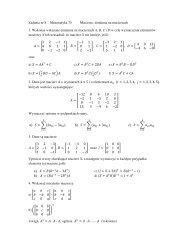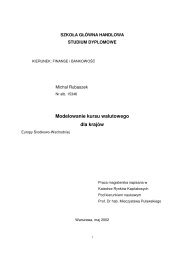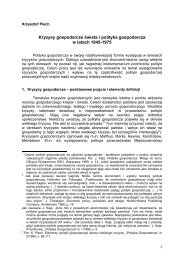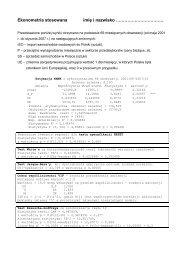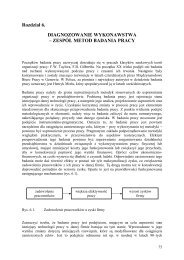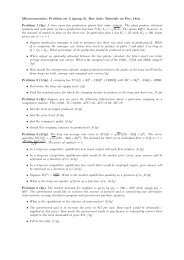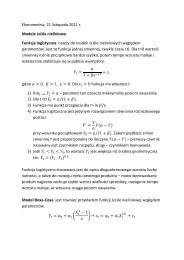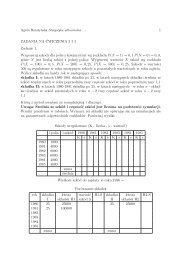Problem sets for Microeconomics II [110051-0471]
Problem sets for Microeconomics II [110051-0471]
Problem sets for Microeconomics II [110051-0471]
You also want an ePaper? Increase the reach of your titles
YUMPU automatically turns print PDFs into web optimized ePapers that Google loves.
7 Game theory<br />
Exercise 7.1. Firms M and N compete <strong>for</strong> a market and must independently decide<br />
how much to advertise. Each can spend either $10 million or $20 million on<br />
advertising. If the firms spend equal amounts, they split the $120 million market<br />
equally. (For instance, if both choose to spend $20 million, each firm’s net profit<br />
is 60 – 20 = $40 million.) If one firm spends $20 million and other $10 million, the<br />
<strong>for</strong>mer claims two thirds of the market and the latter one-third.<br />
a. If the firms act independently, what advertising level should each choose Explain.<br />
Is a prisoner’s dilemma present<br />
b. Could the firms profit by entering into an industry-wide agreement concerning<br />
the extent of advertising Explain.<br />
Exercise 7.2. A firm sells two goods in a market consisting of three types of consumers.<br />
The table shows the values consumers place on the goods. The unit cost<br />
of producing each good is $5.<br />
Good<br />
Consumers X Y<br />
A 13 6<br />
B 7 11<br />
C 15 2<br />
Find the optimal prices <strong>for</strong> (a) selling the goods separately, (b) pure bundling,<br />
and (c) mixed bundling. Which pricing strategy is most profitable<br />
Exercise 7.3. Find all Nash equilibriums in the game of two banks, whose management<br />
considers selling to debtors their liabilities <strong>for</strong> the discounted price.<br />
Bank <strong>II</strong><br />
S<br />
NS<br />
Bank I S 6,6 6,11<br />
NS 11,6 6,6<br />
Exercise 7.4. There are three payoff tables given.<br />
a. Identify the equilibrium outcome(s) in each of the three payoff tables.<br />
I. C 1 C 2<br />
R 1 12,10 10,4<br />
R 2 4,8 9,6<br />
<strong>II</strong>. C 1 C 2<br />
R 1 12,10 4,4<br />
R 2 4,4 9,6<br />
18<br />
<strong>II</strong>I. C 1 C 2<br />
R 1 12,10 4,4<br />
R 2 4,-100 9,6


![Problem sets for Microeconomics II [110051-0471]](https://img.yumpu.com/32645692/18/500x640/problem-sets-for-microeconomics-ii-110051-0471.jpg)

